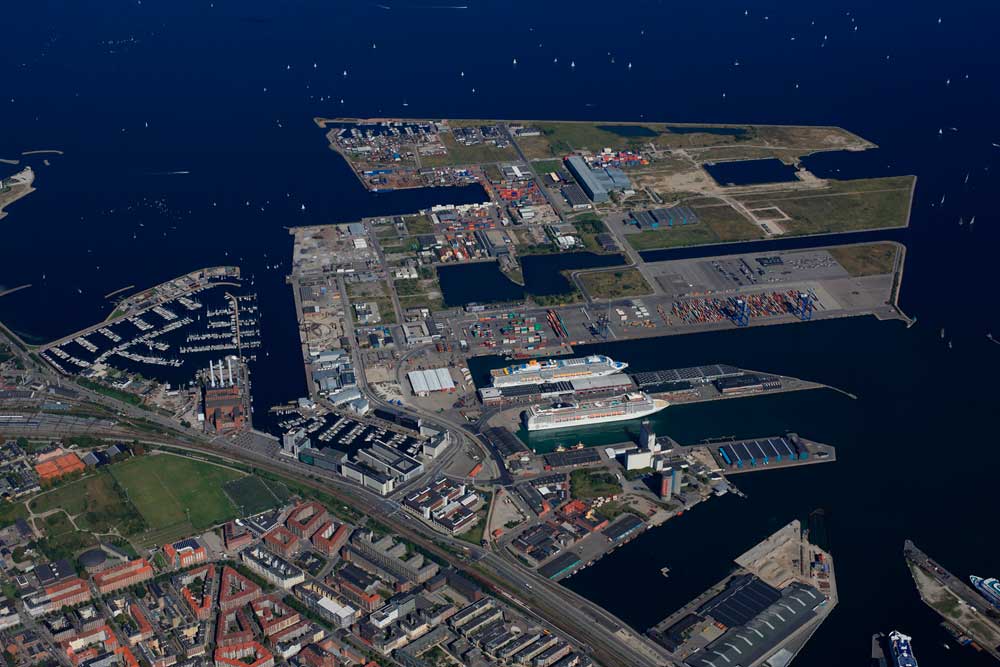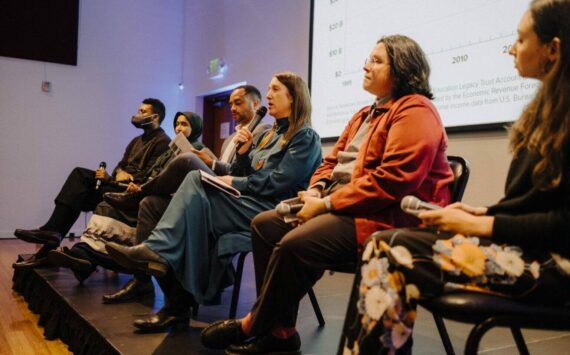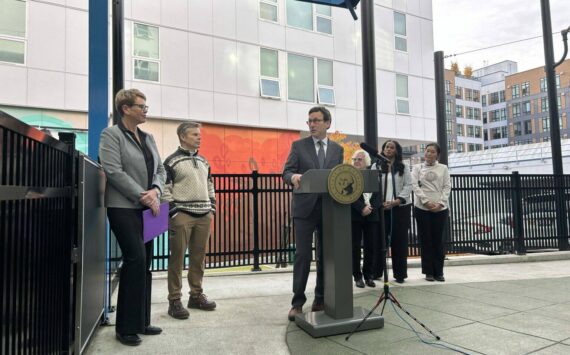By Morf Morford
Tacoma Daily Index
I have just returned from a tour of Baltic port cities – Oslo, Copenhagen, Helsinki and Stockholm. These are, or are certainly among, the most thriving port cities in Europe, if not the world. Their economic, educational and transportation systems and their levels of citizen satisfaction, if not happiness, are the envy of the rest of the world.
To put it mildly, this was a fascinating and instructive experience.
Each of these cities have an ancient history – reaching to – and beyond – the Vikings and the Roman Empire. But they are not looking at the past – they honor and preserve it – but their eye is on the future.
They clearly recognize that their ports are, like ours, the primary engine of their economy – and their main point of contact with the rest of the world.
These cities are, in many ways, years ahead of Tacoma. If these northern ports have anything to teach us, it is that the era of crude, toxic industrialization is over.
Flammable and potentially explosive processing facilities should never have been established in heavily populated areas. If we in Tacoma did not know that a generation ago, we certainly know it now.


Within just a few days of my return to Tacoma, a public meeting was held on the future of The Port of Tacoma. That same evening I attended another meeting – a union meeting – where a prominent theme was to keep The Port of Tacoma a “working port.” I can’t imagine anyone disagreeing with that. The contention revolves around what “working” really means.
The Baltic ports are certainly “working” in every sense of the word. They are productive, profitable, visually appealing and sustainable. They “work” for local citizens, visitors, port workers and local and global businesses. Copenhagen, for example, is headquarters for Maersk – the world’s largest container-ship company in the world (https://www.maerskline.com/).
These ports are expanding and solidifying their place in the world economy. These ports recognize that the world economy is rapidly changing. The price of oil is at record lows and is expected to stay there – or drop even further. They know that a port city of the future is not a port city of the past.
The Baltic ports have moved away from a dependency on dirty fossil fuel based industry. These ports are a magnet for trade, tourism, construction and development.
The focus is not on any one area of expansion, but on a mix of industrial use, environmental restoration, residential and recreational opportunities.
One thing they know very clearly – when it comes to dependence on fossil fuels and contaminating industries – the past is gone and the future is inevitable.
We in Tacoma know all too well the decades-long lingering cost of contamination. The toxic legacy of ASARCO and the Superfund cleanup of Commencement Bay has cost us more jobs and dollars – and lost opportunity – than could ever be measured.
The Port of Tacoma needs to lead the way into the emerging economy. Yes, jobs are at stake – but not just jobs now. If we want The Port of Tacoma – and the greater Tacoma area – to thrive and prosper, we need to look at the larger and longer picture.
The Baltic port cities are flourishing – and are positioned to continue to do so. These are cities that have seen a lot over the centuries. We just happened to be in Copenhagen as they commemorated their 850th birthday. These cities have seen natural disasters, enemy occupations and constantly shifting economies and technologies. They still have their challenges.
The Port of Tacoma has its own challenges, but like those cities, we need to look back, look forward and look around to see what actually “works” for a thriving, appealing, enduring prosperous port city.
Personally I love living in a port city – I love the idea of the continual exchange of ideas, people, and yes, products from around the world. People in port cities have friends, family members and business connections in cities and cultures around the world.
A truly successful port needs to be productive as well as welcoming, as geared to business as it is to individuals and as respectful of the past as it is of the future.
The Port of Tacoma has an annual boat tour and (almost) monthly bus tours (https://www.portoftacoma.com/community/tours). The Port directly or indirectly creates almost 30,000 jobs, and has ample resources and room for expansion.
Our appeal should be to those businesses and agencies that use our strengths and increase our “brand.” Our niche should never be that of the lowest bidder or the port that takes projects and programs no one else wants.
The Port of Tacoma (literally and figuratively) divides and unites our city – the Port is anchored in the past even as it is geared, like few, if any others of the city, for the future.
The Port of Tacoma is one of the few areas of the city that is almost entirely flat –and it is at nearly sea level – alongside a natural deep-water harbor. What are some specific uses for this unique piece of land? With its immediate connections by water, rail and highways – our Port is poised for growth.
Our port has made good – and not so good – choices regarding the best and most enduring uses of our unique port facility. We can honor our past, respect the contributions of port workers here and around the world even as we respect the values and intentions of those who live and work – and raise our families within view of the Port. After all, a port only “works” if it works for everybody.
Nordic Ports
For more details on the Nordic ports, you can see Copenhagen’s port pictured below, with more images here: (http://www.cmport.com/). They also have a program for the many visitors to the city (http://www.cmport.com/news-and-media/news/2017/2017-05-04).
The Port of Oslo (http://www.oslohavn.no/en/about_us/port_of_oslo/) is Norway’s leading cargo and ferry port. Oslo offers daily ferries to Denmark and Germany.
The Port of Helsinki (http://www.portofhelsinki.fi/en/emagazine/port-of-helsinki) has a focus on energy efficiency and environmental responsibility including a water cleaning system “Seabin” (http://www.portofhelsinki.fi/en/emagazine/cleaner-harbours). They also have a thriving tour program (http://www.portofhelsinki.fi/en/emagazine/24-departures-tallinn-day).
Stockholm’s port (http://www.portsofstockholm.com/) handles almost 12 million passengers and eight million metric tons of goods each year through the three Ports of Stockholm.


Image courtesy CMP/ Port of Copenhagen
Photo credit: Perry Nordeng








